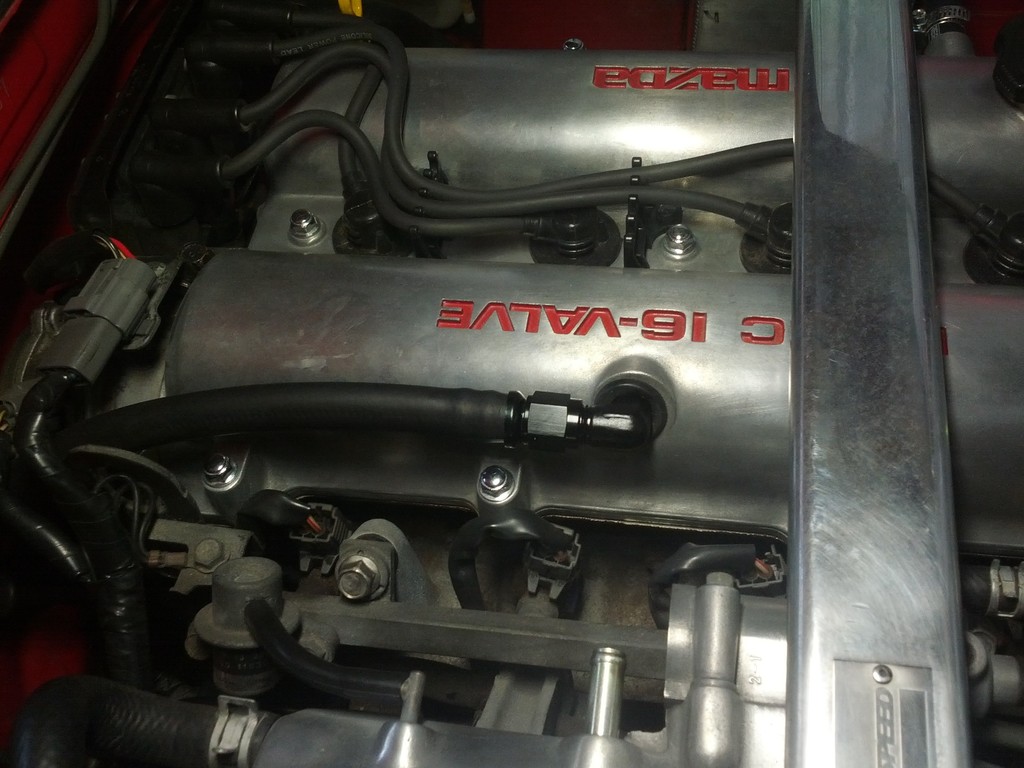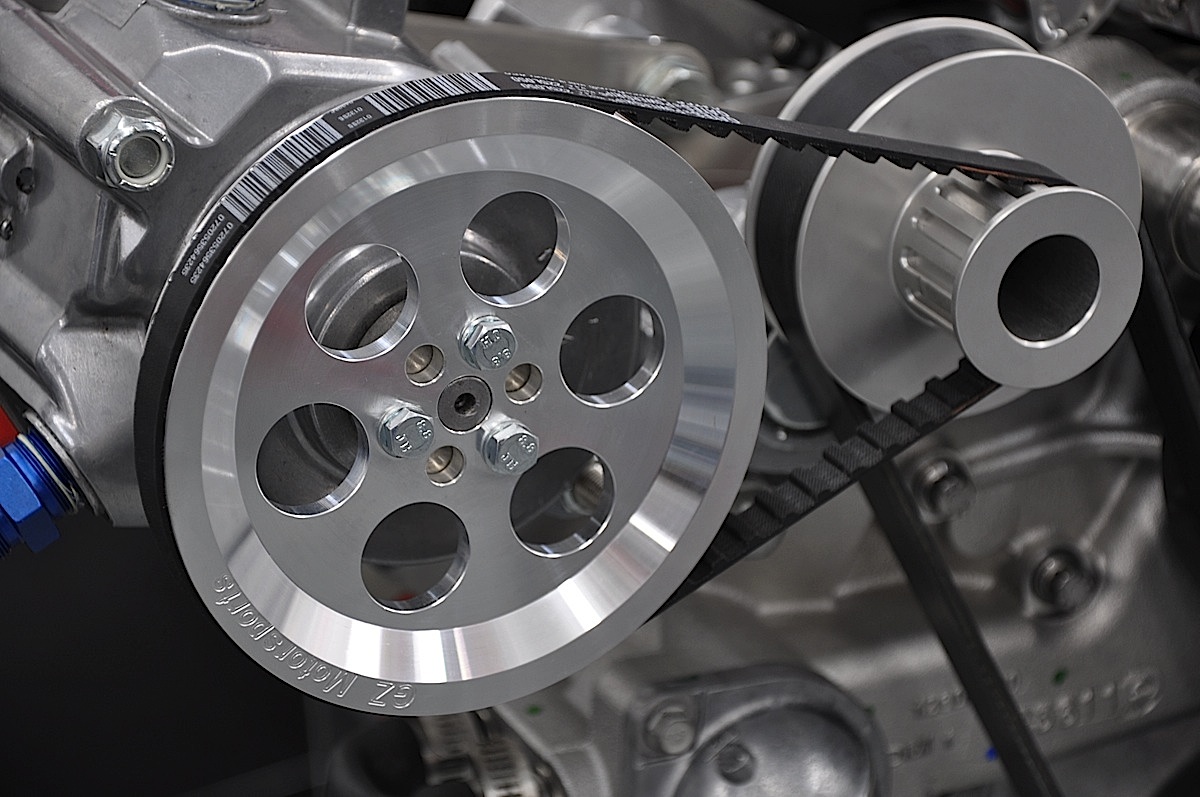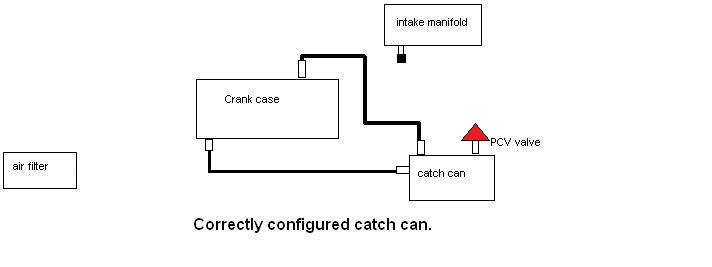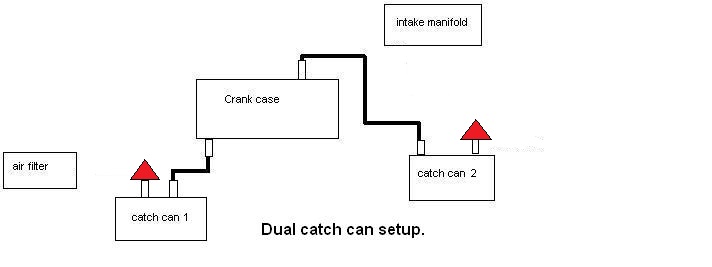The definitive "How do I catch can?" thread.
#1
Senior Member
Thread Starter
iTrader: (2)
Join Date: Mar 2014
Location: Meridian, Mississippi
Posts: 628
Total Cats: 44
Hey guys,
I see threads all over on this forum and others about catch cans, and it seems that most people don't know how the stock PCV system works, and thus don't know what the **** they are doing when then install a catch can system.
The purpose of the stock system is to allow filtered air to be sucked in from the crank case vent, through the head, down into the crank case, and out through the PCV valve into the intake manifold where the nasty **** is sucked into the combustion chambers and burned (putting you closer to knock in the process). The reason we have this is because even in a good engine some gases from the combustion events make it past the piston rings and into the crank case. These gases if left in the crank case form acids in the oil that cause corrosion and bearing wear.
Keep this in mind and it explains how to route things for a correctly operating system while using an oil catch can. Either that or just look at the diagrams
A normally aspirated engine doesn't really need a dual catch can setup, you can have a bit of vapor venting out the inlet vent side at WOT even when naturally aspirated, but not very much... with forced induction you will have a bit more venting from the inlet vent side under boost, and may benefit from the dual catch can.
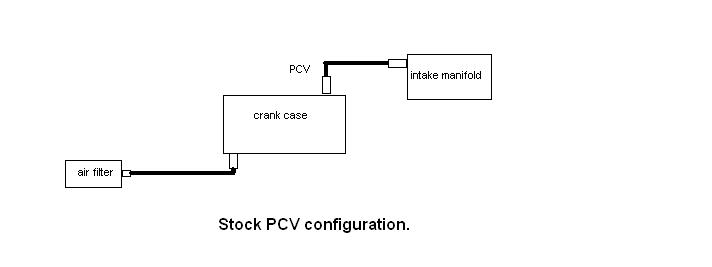
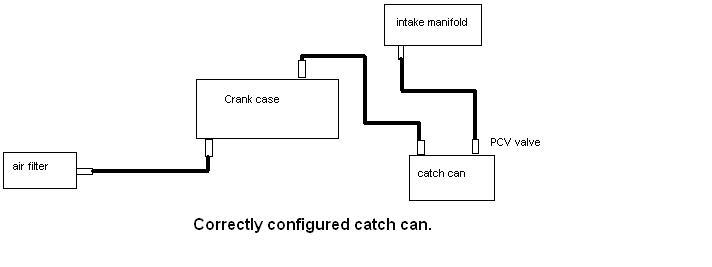
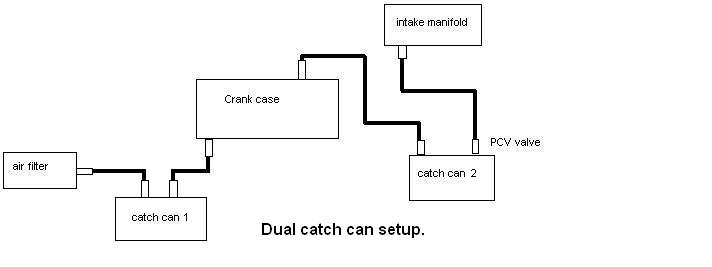
Keith
PS: Never put the oil from a catch can back into your oil pan, the better your catch can works, the more of the acidic crap is trapped in the oil in the catch can. I had a catch can on my EVO that I stuffed with steel wool, and the **** that came out of it was a horrifying mix of unburned fuel, water, and oil.
I see threads all over on this forum and others about catch cans, and it seems that most people don't know how the stock PCV system works, and thus don't know what the **** they are doing when then install a catch can system.
The purpose of the stock system is to allow filtered air to be sucked in from the crank case vent, through the head, down into the crank case, and out through the PCV valve into the intake manifold where the nasty **** is sucked into the combustion chambers and burned (putting you closer to knock in the process). The reason we have this is because even in a good engine some gases from the combustion events make it past the piston rings and into the crank case. These gases if left in the crank case form acids in the oil that cause corrosion and bearing wear.
Keep this in mind and it explains how to route things for a correctly operating system while using an oil catch can. Either that or just look at the diagrams

A normally aspirated engine doesn't really need a dual catch can setup, you can have a bit of vapor venting out the inlet vent side at WOT even when naturally aspirated, but not very much... with forced induction you will have a bit more venting from the inlet vent side under boost, and may benefit from the dual catch can.
Keith
PS: Never put the oil from a catch can back into your oil pan, the better your catch can works, the more of the acidic crap is trapped in the oil in the catch can. I had a catch can on my EVO that I stuffed with steel wool, and the **** that came out of it was a horrifying mix of unburned fuel, water, and oil.
#4
The purpose of the PCV system is to allow the negative pressure in the intake manifold to apply vacuum to the crankcase.
The purpose of a turbocharger is to apply positive pressure to the intake manifold.
Think about that.
There are no "in" holes in my valve cover. Only "out" holes. "In" holes in the valve cover are only there to keep the Californians happy. Even in a stock car, the natural flow of both of those holes is "out" at anything other than an idle.
Lastly: there had better not be any filtered air in my crankcase. If there is indeed air (which contains more than trace amounts of oxygen) in my crankcase, it's because I have positively ventilated the crankcase.
The purpose of a turbocharger is to apply positive pressure to the intake manifold.
Think about that.
There are no "in" holes in my valve cover. Only "out" holes. "In" holes in the valve cover are only there to keep the Californians happy. Even in a stock car, the natural flow of both of those holes is "out" at anything other than an idle.
Lastly: there had better not be any filtered air in my crankcase. If there is indeed air (which contains more than trace amounts of oxygen) in my crankcase, it's because I have positively ventilated the crankcase.
#5
Senior Member
Thread Starter
iTrader: (2)
Join Date: Mar 2014
Location: Meridian, Mississippi
Posts: 628
Total Cats: 44
Back in the 60's and before, cars had a passive system where crank case gasses were just vented out under the car via a hose. The gaseous stuff vented to atmosphere and the oily gunk dripped on the ground under the car.
The current day stock system is an "active" system that does a better job of getting the crap out of the crank case using the negative pressure in the intake manifold to suck out the crap, and the vent tube that goes to the stock intake track to allow fresh filtered air in. It makes the EPA happy because the noxious crap goes to the intake manifold and is burnt in the engine. This makes performance enthusiasts sad because this noxious crap is perfect for lowing your knock threshold, so you can't run as much boost and timing for the same octane fuel as you could without this crap going into the intake manifold.
Keith
#7
Senior Member
Thread Starter
iTrader: (2)
Join Date: Mar 2014
Location: Meridian, Mississippi
Posts: 628
Total Cats: 44
The purpose of the PCV system is to allow the negative pressure in the intake manifold to apply vacuum to the crankcase.
The purpose of a turbocharger is to apply positive pressure to the intake manifold.
Think about that.
There are no "in" holes in my valve cover. Only "out" holes. "In" holes in the valve cover are only there to keep the Californians happy. Even in a stock car, the natural flow of both of those holes is "out" at anything other than an idle.
Lastly: there had better not be any filtered air in my crankcase. If there is indeed air (which contains more than trace amounts of oxygen) in my crankcase, it's because I have positively ventilated the crankcase.
The purpose of a turbocharger is to apply positive pressure to the intake manifold.
Think about that.
There are no "in" holes in my valve cover. Only "out" holes. "In" holes in the valve cover are only there to keep the Californians happy. Even in a stock car, the natural flow of both of those holes is "out" at anything other than an idle.
Lastly: there had better not be any filtered air in my crankcase. If there is indeed air (which contains more than trace amounts of oxygen) in my crankcase, it's because I have positively ventilated the crankcase.
When the car is in positive boost, the PCV valve is shut and any pressure build up in the crank case from blowby getting past the piston rings goes out the vent on the drivers side into the intake. This is why a car with a forced induction system can benefit from a second catch can, it prevents the noxious crap from the crank case from coating the insides of everything in the intake track, and keeps those same vapors that don't condense out in your intercooler from making it into your combustion chambers.
If you take any factory turbocharged car and take the intercooler off and dump some mineral spirits into it as a solvent and shake it all around you get black oily goo out when you dump it. This coating of crap reduces heat transfer as well as all the other nasty effects.
If you just have an out hole without any in hole you have a 60's style setup with poor ventilation. You can do a "vent to exhaust" setup if you do a venturi in the vent line where it joins the exhaust to allow the exhaust flow to draw a vacuum on the system. This is more complex than a PCV valve system, and the vacuum isn't as strong... but it is better than the passive 60's style setup, and in some ways is better for a forced induction setup since it has good vacuum even when the engine is under boost when you need it the most.
Keith
#9
Senior Member
Thread Starter
iTrader: (2)
Join Date: Mar 2014
Location: Meridian, Mississippi
Posts: 628
Total Cats: 44
In the mitsubishi world, poor PCV operation results in oil dip sticks being blown out of the dip stick tube by the positive pressure in the crank case... this is common in two circumstances, a poorly executed catch can setup or a failed PCV valve that allows boost pressure into the crank case.
As a rule of thumb, if your dip stick is staying in your dip stick tube, then you are not building up significant positive pressure in the crank case

Keith
#10
You have zero vacuum when under boost, so you don't have "active" scavenging of the blowby gases... but they still are vented "passively" through the vent on the drivers side.
So, half of the system vents, the other half is blocked when in boost.
And as soon as you go out of boost
Why is this period relevant on an aftermarket performance turbocharged car?
into vacuum in the intake manifold the PCV valve opens and draws all that crap out and into your catch can. Even on a track day event, every time you shift the PCV system is actively scavenging this crap out of your crank case, and when under boost it is passively venting out the vent side.
In the mitsubishi world, poor PCV operation results in oil dip sticks being blown out of the dip stick tube by the positive pressure in the crank case... this is common in two circumstances, a poorly executed catch can setup or a failed PCV valve that allows boost pressure into the crank case.
What about not connecting the inlet pressure to the crankcase at all?
As a rule of thumb, if your dip stick is staying in your dip stick tube, then you are not building up significant positive pressure in the crank case
Keith
So, half of the system vents, the other half is blocked when in boost.
And as soon as you go out of boost
Why is this period relevant on an aftermarket performance turbocharged car?
into vacuum in the intake manifold the PCV valve opens and draws all that crap out and into your catch can. Even on a track day event, every time you shift the PCV system is actively scavenging this crap out of your crank case, and when under boost it is passively venting out the vent side.
In the mitsubishi world, poor PCV operation results in oil dip sticks being blown out of the dip stick tube by the positive pressure in the crank case... this is common in two circumstances, a poorly executed catch can setup or a failed PCV valve that allows boost pressure into the crank case.
What about not connecting the inlet pressure to the crankcase at all?
As a rule of thumb, if your dip stick is staying in your dip stick tube, then you are not building up significant positive pressure in the crank case

Keith
#12
Senior Member
Thread Starter
iTrader: (2)
Join Date: Mar 2014
Location: Meridian, Mississippi
Posts: 628
Total Cats: 44
With a passive system, you don't have vacuum under boost, or when not under boost... if you are satisfied with a passive vent system then have at it and enjoy!
Personally since the drivers side vent is large enough to prevent positive pressure in the crank case I see no reason to disable the PCV system when installing a catch can setup. The benefits of keeping the PCV system intact become clear when you have a two catch can system and see how fast the can on the PCV valve side fills up when compared to the can on the passive vent side.
Keith
#13
Elite Member
iTrader: (1)
Join Date: May 2009
Location: Jacksonville, FL
Posts: 5,155
Total Cats: 406
tl;dr
I think you (OP) are confusing a separator with a catch can. Catch can catches the bullshit. Then you dump it in a solo cup every once in a while or forget about it and it makes a sexy oil explosion in your engine bay.
Separartor does the same thing but with less maintenance at the cost of effectively lowered octane when your busted *** engine blows tons of oil vapors into the intake manifold.
I think you (OP) are confusing a separator with a catch can. Catch can catches the bullshit. Then you dump it in a solo cup every once in a while or forget about it and it makes a sexy oil explosion in your engine bay.
Separartor does the same thing but with less maintenance at the cost of effectively lowered octane when your busted *** engine blows tons of oil vapors into the intake manifold.
#14
The idea is to take a vacuum from somewhere else, be it intake tract or as you mentioned earlier from the exhaust will give you negative pressure in the crankcase at all times but also increasing with load/boost. The idea of negative pressure in the crank case is not only to evacuate unwanted fumes but also vacuum helps your rings seal better. Less blow by, more power, happier engine.
Also regardless of how good you "filter" your catch can with steel wool pot/pan pads or shower lufas or whatever its not an air filter and its going to still dump blowby fumes into your intake manifold.
Also regardless of how good you "filter" your catch can with steel wool pot/pan pads or shower lufas or whatever its not an air filter and its going to still dump blowby fumes into your intake manifold.
#18
Slowest Progress Ever

iTrader: (26)
Join Date: Oct 2007
Location: The coal ridden hills of Pennsylvania
Posts: 6,022
Total Cats: 304
I have my Pcv port welded shut. Then I went -10 hose off my breather port to a slash cut at the end of my DP with a check valve. That it. Simple and effective.
#20
And the PCV valve is a check valve that keeps the positive pressure in the intake manifold from pressurizing the crank case!
When the car is in positive boost, the PCV valve is shut and any pressure build up in the crank case from blowby getting past the piston rings goes out the vent on the drivers side into the intake.
When the car is in positive boost, the PCV valve is shut and any pressure build up in the crank case from blowby getting past the piston rings goes out the vent on the drivers side into the intake.




